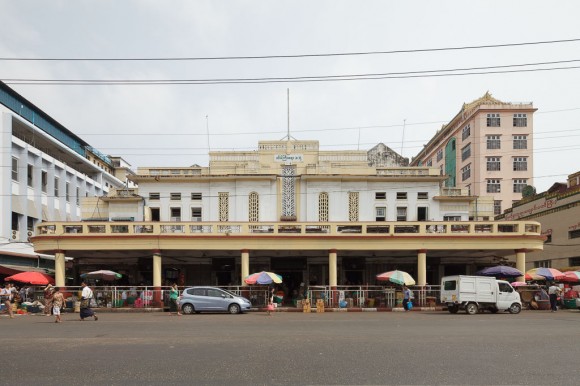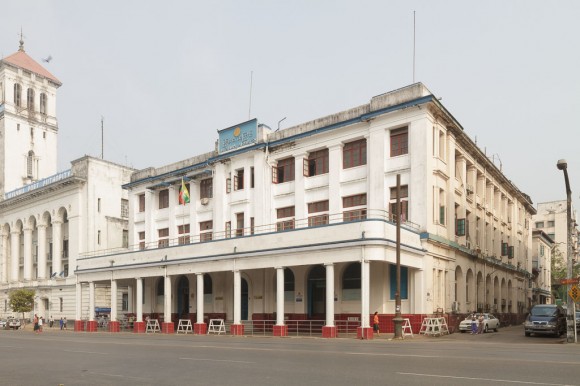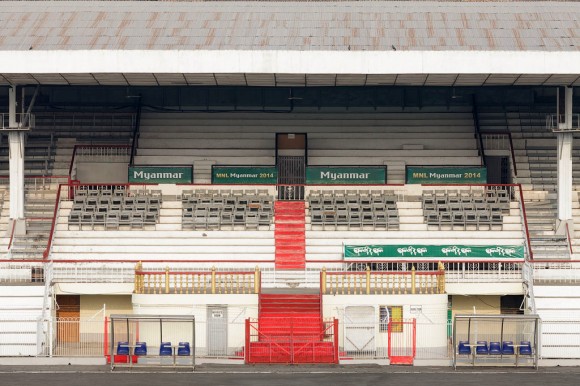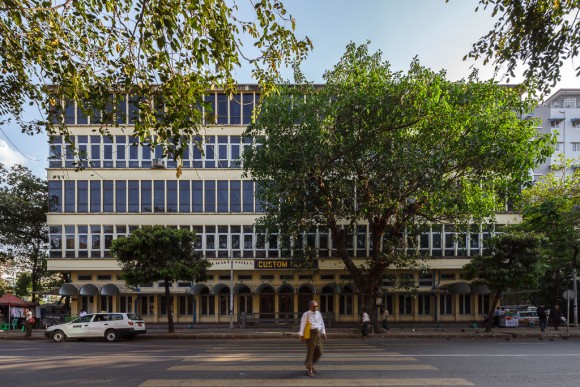To kick off the crowdsourcing aspect of our Yangon Architecture Guide, we launched Tumblr and Facebook pages. We are initially featuring some of the lesser-known buildings, and have already received great comments from from an extremely gracious generous gentleman called Harry Hpone Thant. I paste some examples below the jump.
Thein Gyi Market
What is today known as Thein Gyi Market began operations as “Surati Bara Bazaar” in 1905. Surati (after Surat) refers to immigrants from Gujarat who came to Rangoon and Burma in large numbers during the 19th century. From 1872 to 1881 alone, the Indian migrant population in the city more than quadrupled, to 66,000. Indian culture and traditions, from religion to music and food, are ubiquituous in the downtown area.
Harry’s comment reads:
Theingyi Zay (market) got its name due to the fact that it is situated near a monastery of the same name. Theingyi means ” “Big Buddhist Consecration Hall”. According to some literature this land belonged to the Shwedagon Pagoda during the kings’ time. Part of that monastery is visible on the right.
The Bogyoke Aung San Stadium is Yangon’s main sport stadium, with a capacity of about 40,000. On Zoological Garden Road, it is a stone’s throw away from the Central Railway Station. The stadium dates back to the 1950s and was the main facility for the 2nd South East Asia Games held in Rangoon in 1961, the year before the coup d’état was to put an end to post-war democracy. Today the Myanmar National League’s top-seed Yangon United play their home games here.
Harry’s comment:
Cannot exactly remember the year but once at an All Union Soccer Final there was a riot and the Grandstand was burnt down by the rioters. PM U Nu was there for the Prize Presentation as I remember and my father and I had to run for our safety when the disturbances broke out.The rioters fanned down Pansodan Street (Phyre Street) and did some damage to private property.
In pre-war days this was called Sorrento Villa. A white paper on reconstruction of Myanmar(Burma) after WWII was named Sorrento Villa Plan as it was drawn up at this building. I was stationed there on temporary duty twice (around 1970 and 1973) to oversee some printing jobs for my mother unit.





